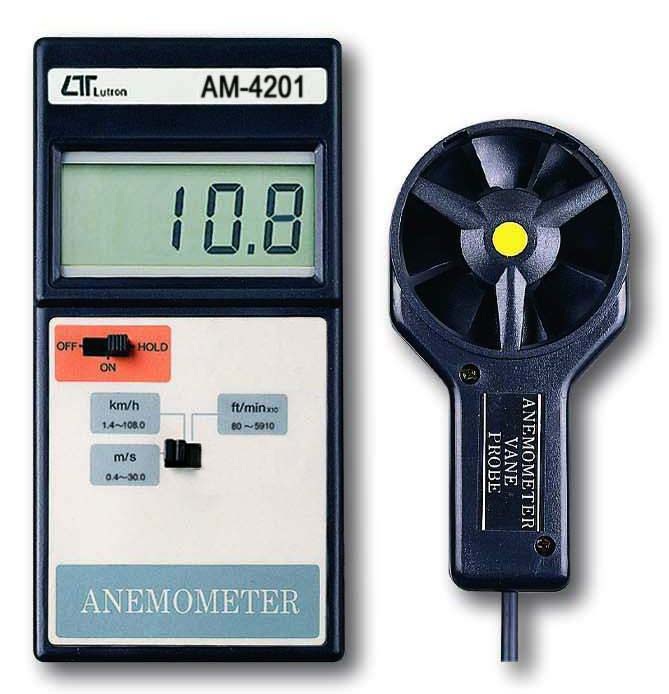Professional Tips for Adjusting Your Anemometer for Optimal Efficiency
Professional Tips for Adjusting Your Anemometer for Optimal Efficiency
Blog Article
All You Need to Find Out About Anemometers: Just How They Function, Why They Matter, and Where to Use Them
Anemometers, though often forgotten in the realm of clinical instruments, play a crucial role in different fields, using beneficial insights into wind speed and air flow patterns. As we delve right into the complexities of anemometer modern technology, we will discover the inner operations of these devices, their importance, and the essential factors to consider when choosing the right anemometer for particular applications.

Anemometer Basics
An important tool utilized to determine wind rate and direction, the anemometer plays an important function in weather forecasting and various sectors. An anemometer typically contains three or 4 mugs that rotate in the wind, a vane that points right into the wind, and sensing units to track the movements or rotations. By computing the rotations or activities over a particular time period, the anemometer can determine wind rate. The vane helps establish wind instructions by aiming right into the wind, offering important data for weather condition forecasting, aeronautics, maritime procedures, environmental monitoring, and wind power applications.
There are different kinds of anemometers offered, including mug anemometers, vane anemometers, hot-wire anemometers, and sonic anemometers, each with its special attributes and applications. Mug anemometers are generally made use of for fundamental wind rate dimensions, while vane anemometers are liked for directional measurements. Hot-wire anemometers appropriate for low airspeeds, and sonic anemometers are perfect for high-precision measurements in research and commercial settings. Comprehending the essentials of anemometers is necessary for accurate wind data collection and analysis across different markets.
Concepts of Anemometer Procedure
Building on the foundational understanding of anemometer basics, the concepts of anemometer operation illuminate the technicians behind wind rate and direction dimensions. Mug anemometers, for instance, have 3 or even more cups that catch the wind, causing them to spin quicker as the wind speed boosts. Hot-wire anemometers count on a warmed cord that cools down as wind passes over it, with the price of cooling down figuring out the wind rate.
Relevance of Anemometers
Anemometers play a critical role in gauging wind rate and direction, supplying crucial information for weather projecting, climate research studies, environmental surveillance, and aviation operations. Meteorologists depend on anemometers to collect precise wind data, helping them comprehend climate patterns, predict tornados, and problem prompt warnings to the public. Wind ranch drivers use anemometers to assess wind conditions and make the most of power manufacturing from wind turbines.
Applications Across Various Industries
Applications of anemometers span throughout varied sectors, showcasing their i loved this flexibility and energy beyond meteorology. In the renewable resource field, anemometers play an essential function in assessing wind problems for wind farm positionings, making certain optimum energy production. Industries like building and mining make use of anemometers to check wind rates, vital for safety and security procedures, especially when working at elevations or in open-pit mines where strong winds can pose dangers. Anemometers are additionally indispensable in the aviation industry, helping pilots in recognizing airspeed and wind instructions for safe take-offs and landings. The maritime sector take advantage of anemometers for ship navigation, assisting sailors anticipate climate adjustments and readjust paths accordingly. In farming, anemometers help farmers in taking care of crop splashing by supplying real-time data on wind rate to avoid drift. Anemometers locate applications in A/c systems to maximize airflow and boost power effectiveness in buildings. The diverse use cases a knockout post of anemometers highlight their significance across different sectors, highlighting their indispensable role in boosting functional security and effectiveness (anemometer).

Selecting the Right Anemometer for Your Demands
Picking the proper anemometer customized to your details demands is crucial for getting exact wind rate and instructions dimensions. When picking an anemometer, take into consideration variables such as the desired application, called for measurement range, ecological problems, and preferred functions. For general objectives, a cup anemometer appropriates for gauging wind speed, while a vane anemometer supplies wind direction information. Hot-wire anemometers are perfect for low airspeed measurements, and ultrasonic anemometers use high accuracy and sturdiness.

Conclusion
Finally, anemometers play a vital role in determining wind speed and direction throughout various industries. Comprehending the principles of anemometer procedure is essential for choosing the right tool for details needs. From weather forecasting to aviation, anemometers are essential tools for ensuring and accumulating exact data safety and security in different applications. It is crucial to think about the value of anemometers in order to make informed choices when selecting one of the most appropriate tool for measuring wind conditions.
There are various kinds of anemometers readily available, consisting of mug anemometers, vane anemometers, hot-wire anemometers, and sonic anemometers, each with its distinct features and applications. Mug anemometers are frequently made use of for fundamental wind look here rate dimensions, while vane anemometers are liked for directional dimensions. Hot-wire anemometers are appropriate for low airspeeds, and sonic anemometers are excellent for high-precision dimensions in study and commercial settings.Building on the foundational understanding of anemometer fundamentals, the principles of anemometer operation illuminate the technicians behind wind rate and direction measurements. For basic purposes, a cup anemometer is suitable for gauging wind speed, while a vane anemometer provides wind instructions data.
Report this page